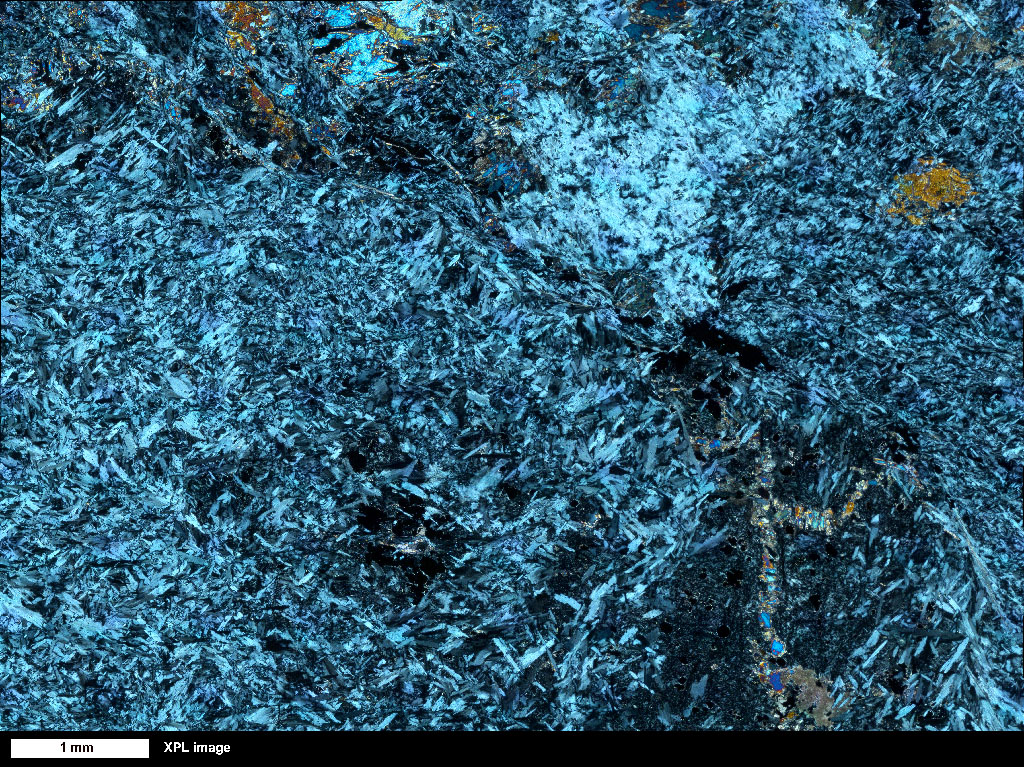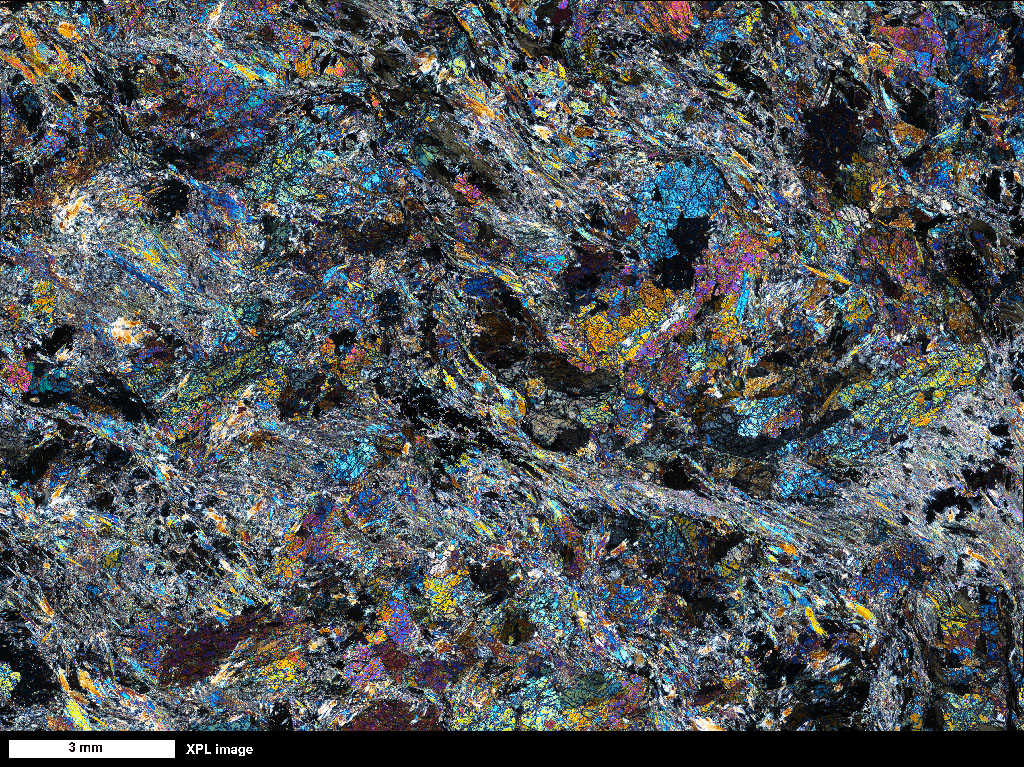Contact metamorphism may occur in rocks adjacent to igneous intrusions. Because the heat source is known and deformation is absent in most cases, the sequence of mineral assemblages as the intrusion is approached should reflect increases in temperature at nearly constant pressure. This activity provides an opportunity to look at and think about the mineralogical changes that occur in a suite of ultramafic rocks that have been metamorphsed in a contact aureole. The activity begins with an examination of images of rocks and thin sections. You are then asked to use your observations of these rocks to complete the following tasks.
- Identify the minerals present in each rock from a set of possible minerals.
- Show the observed mineral assemblages on a ternary composition diagram.
- Use the mineral assemblages to place the samples on a T-P diagram showing possible chemical reactions among the minerals.
- Estimate the conditions of contact metamorphism using the observed mineral assemblages.
- Identify the chemical reactions mapped as isograds shown on a map of a contact aureole.
- Using the assemblages idenfied in the metamorphosed ultramafic rocks, place them in appropriate locations in the contact aureole.

